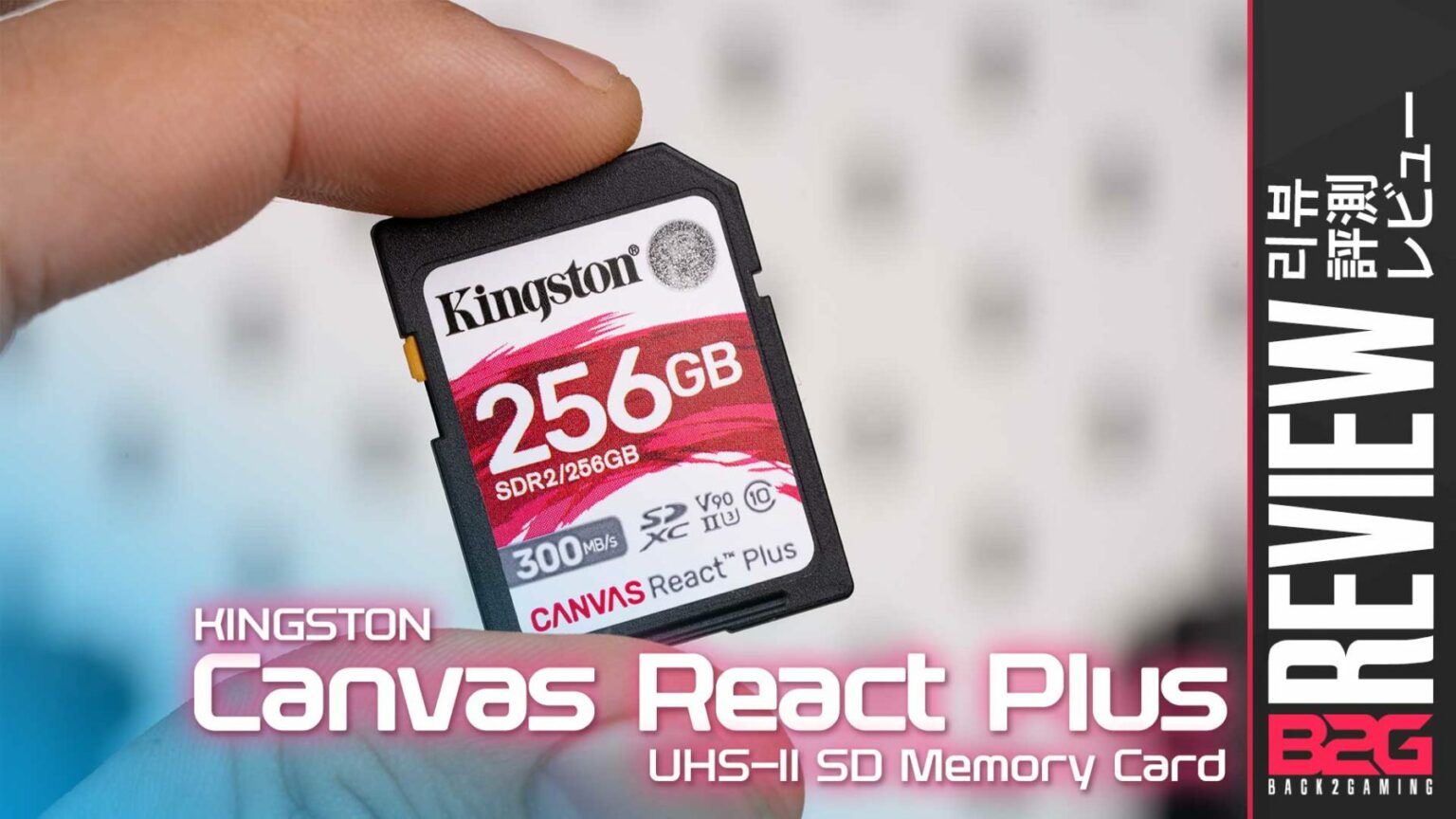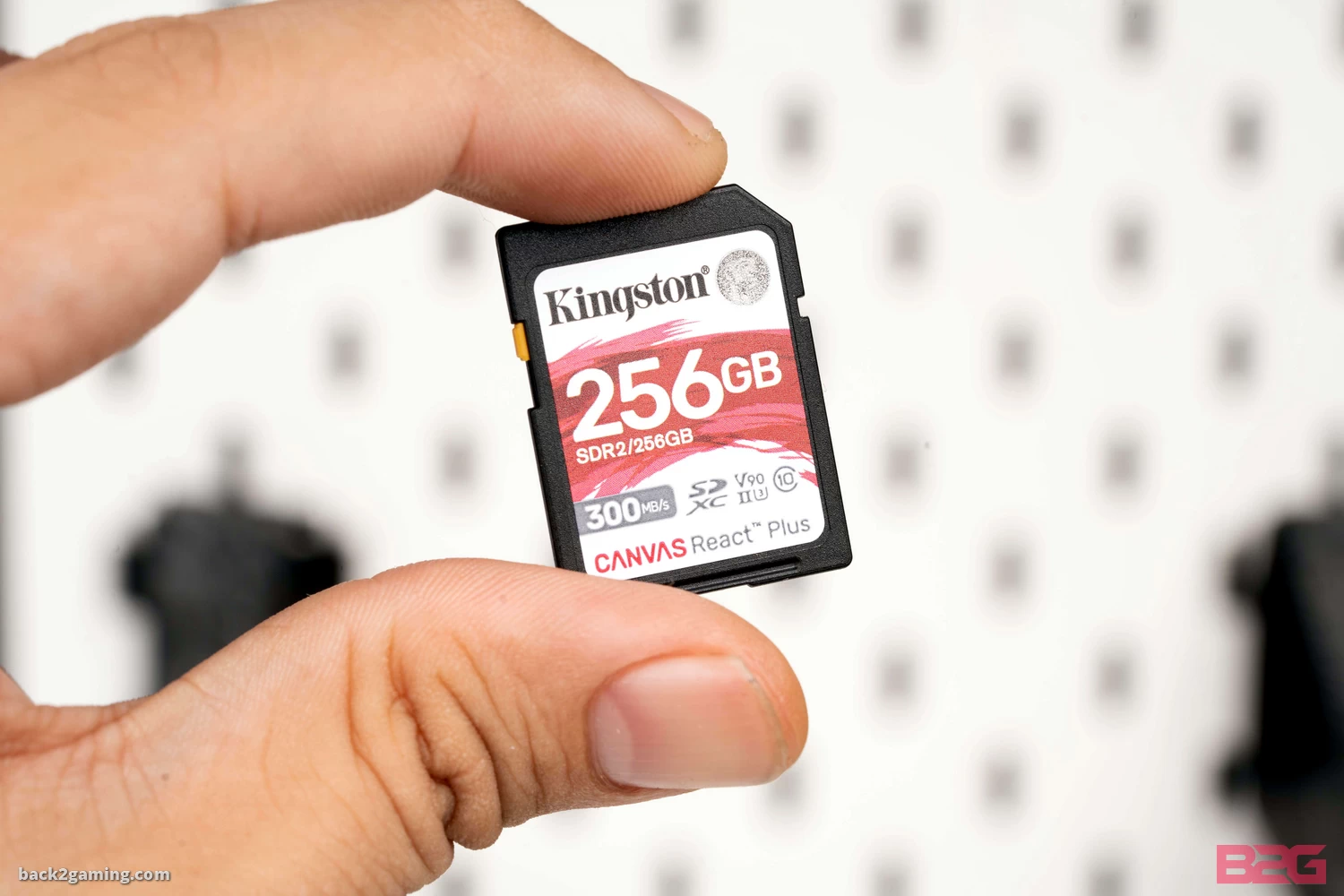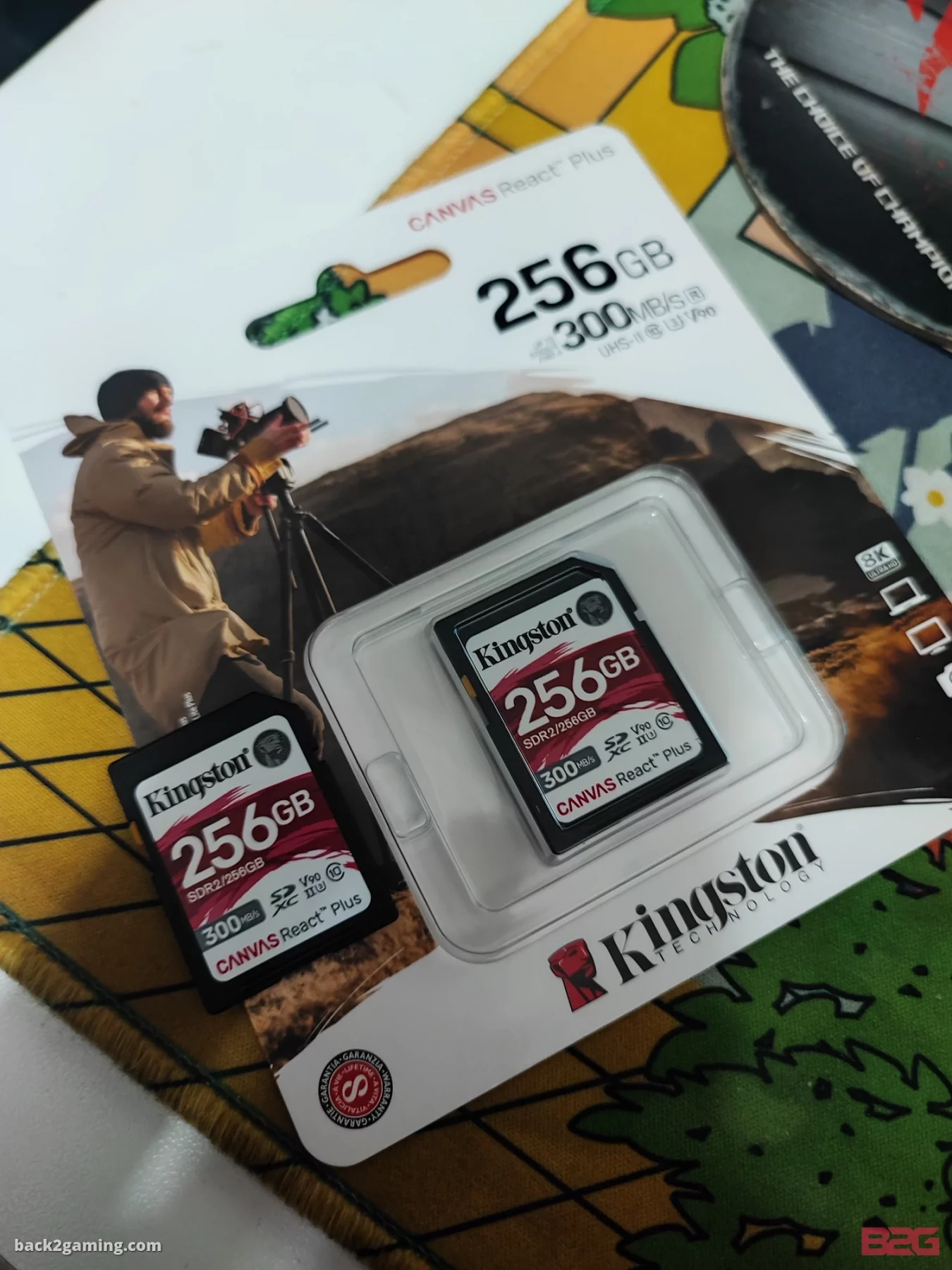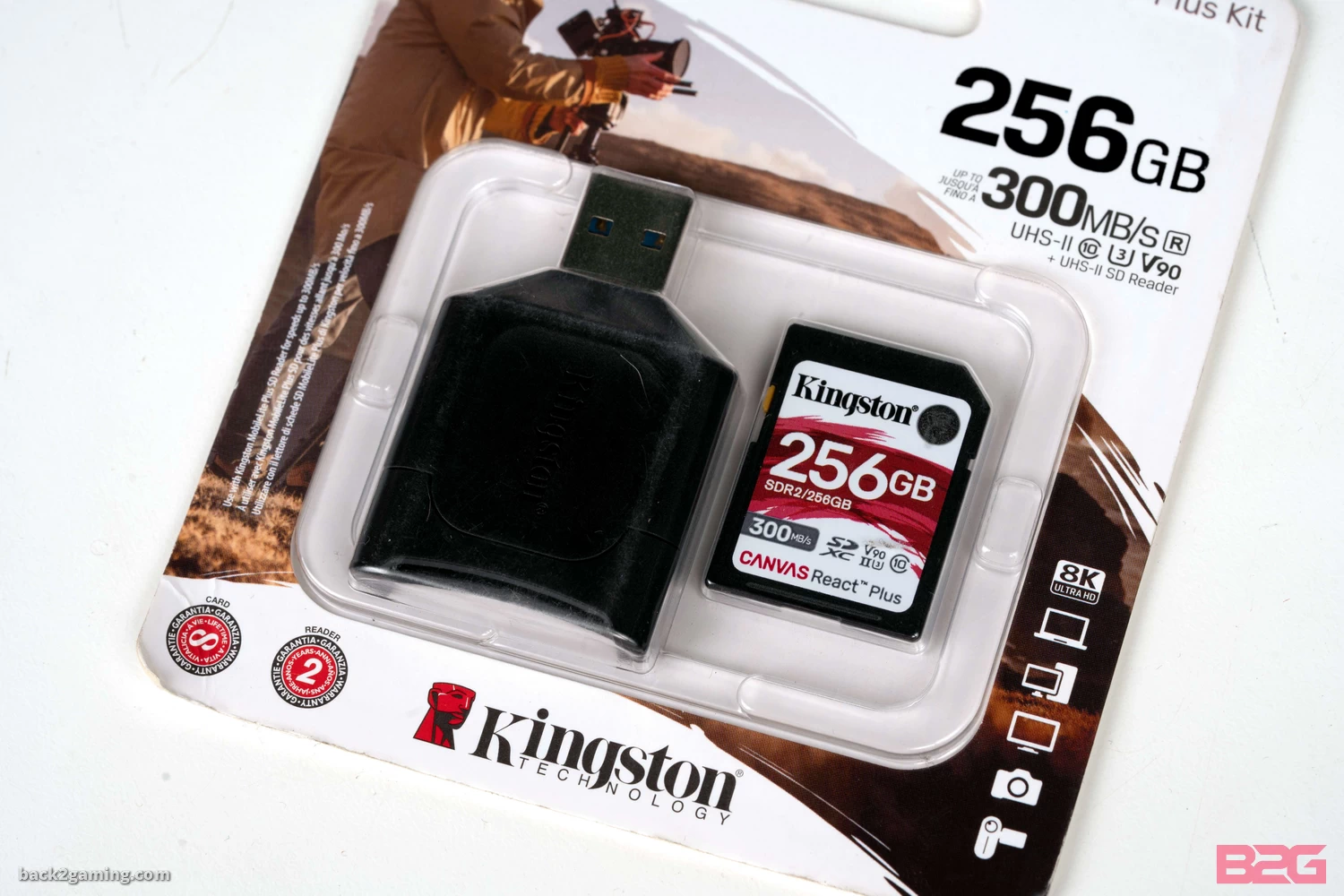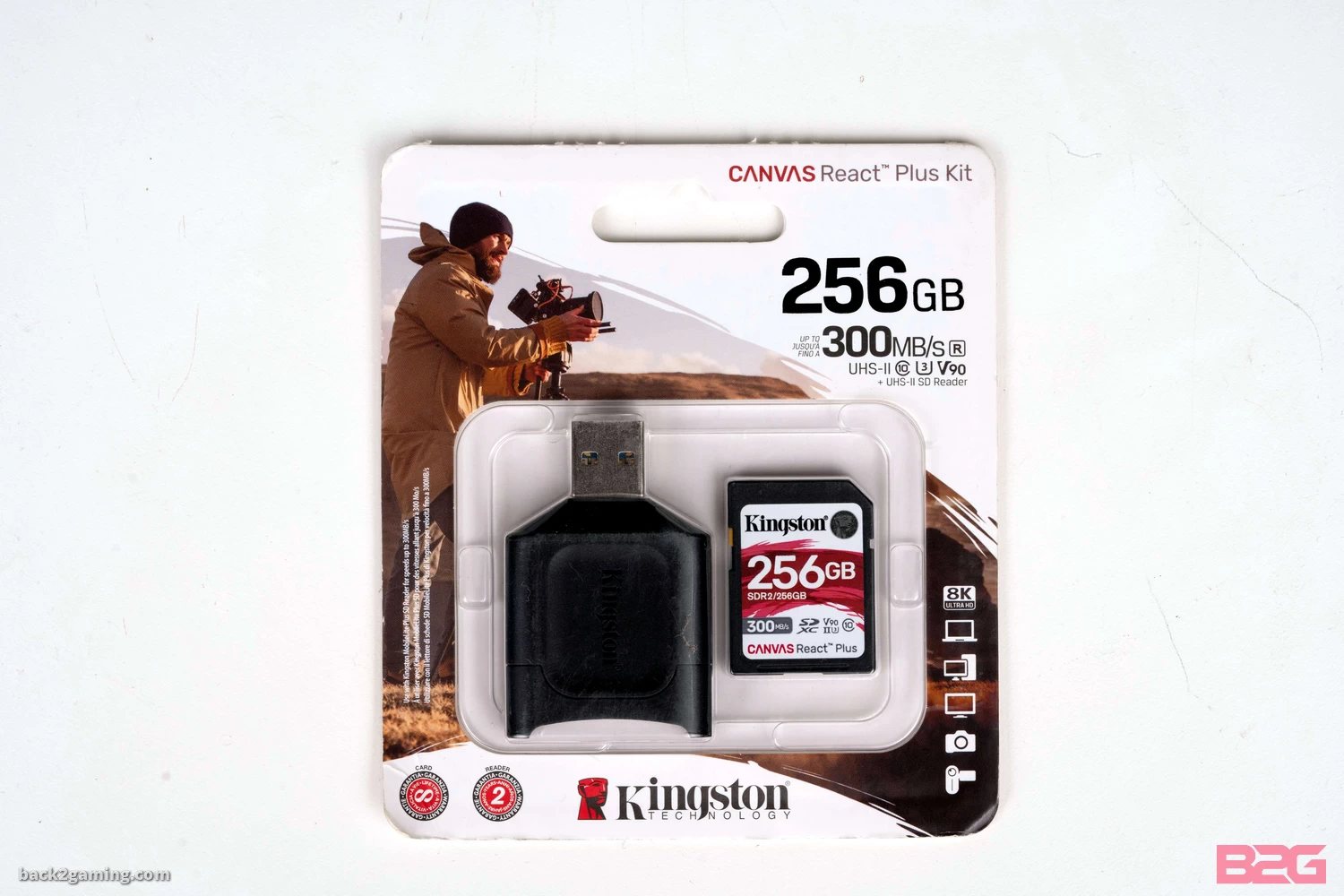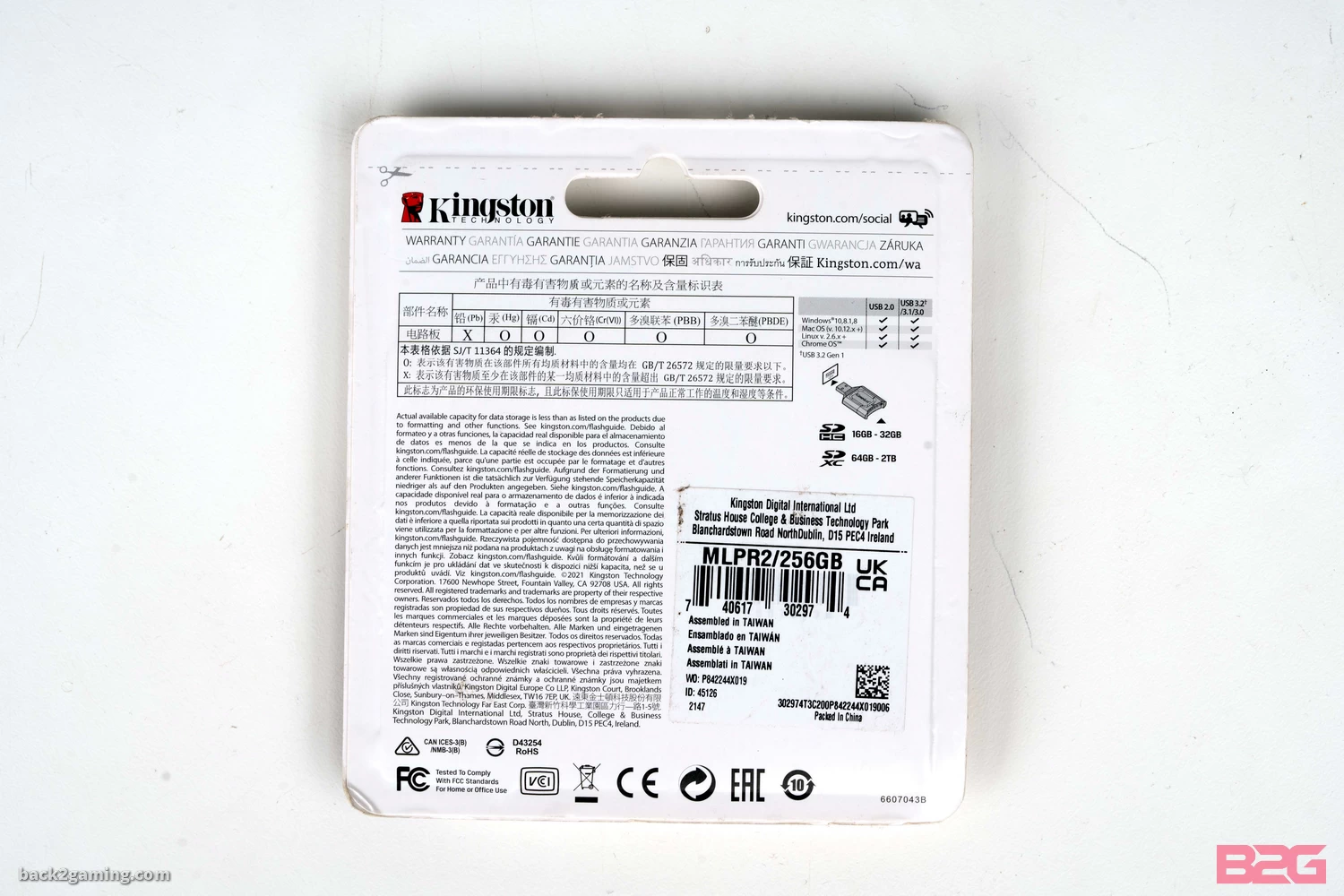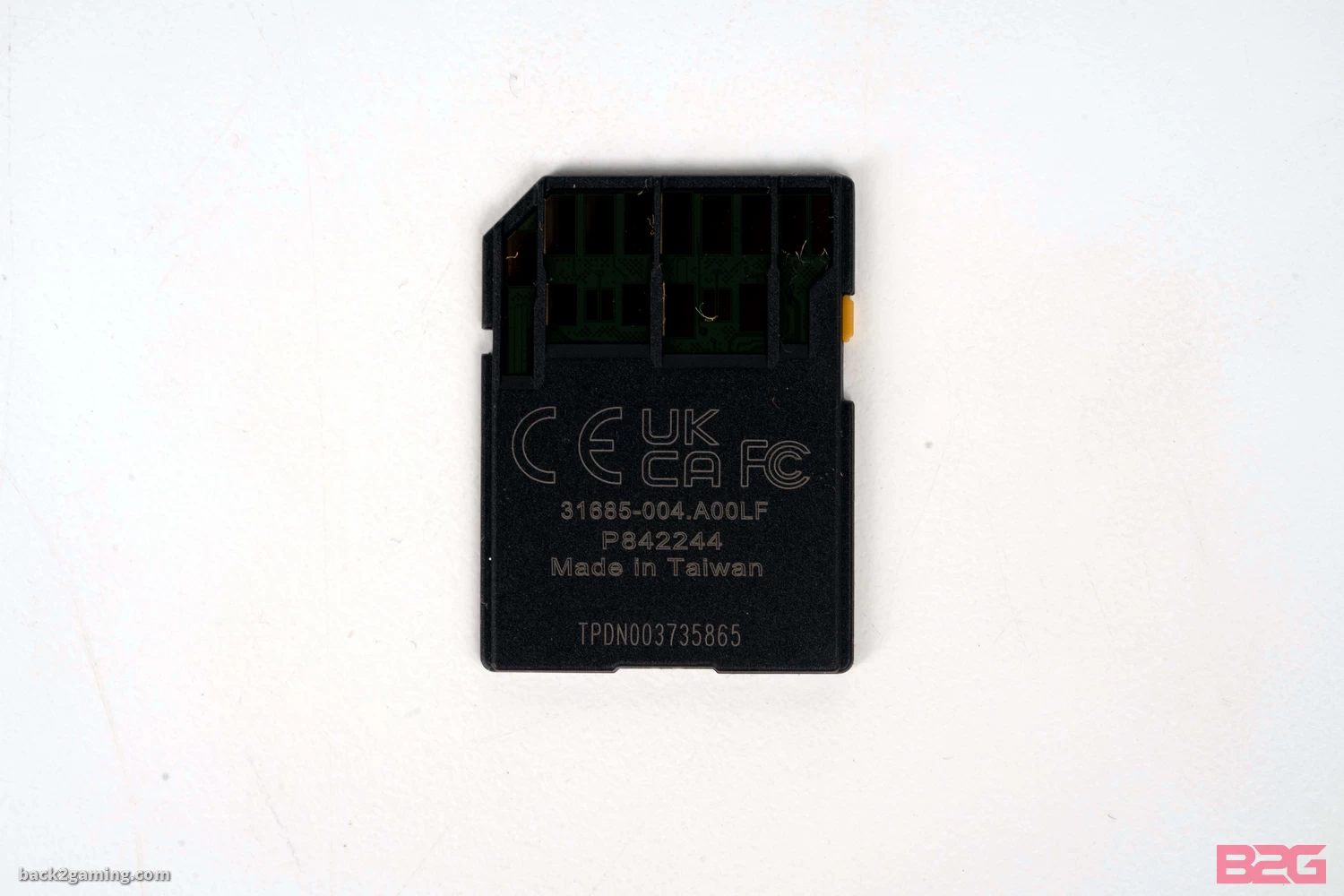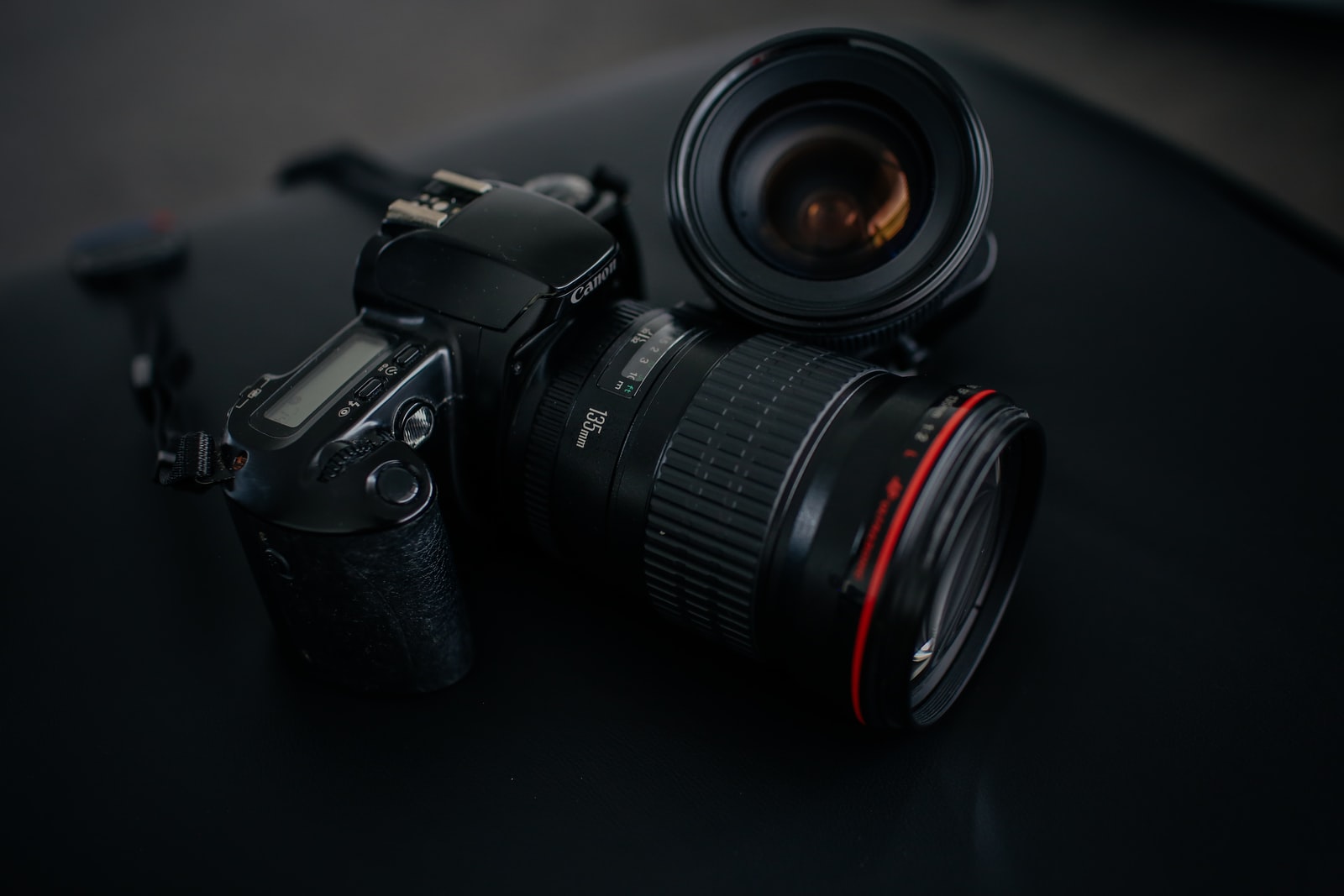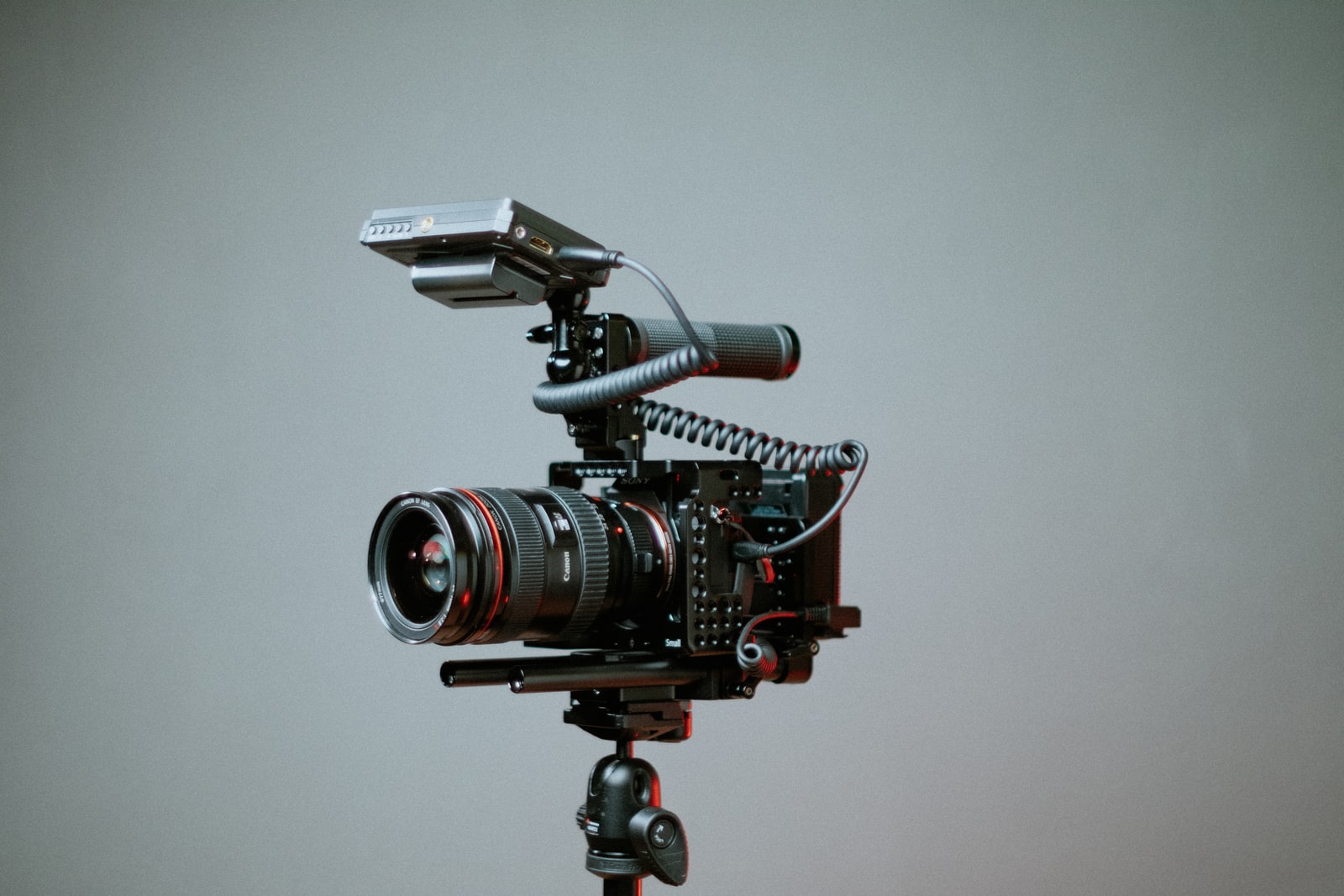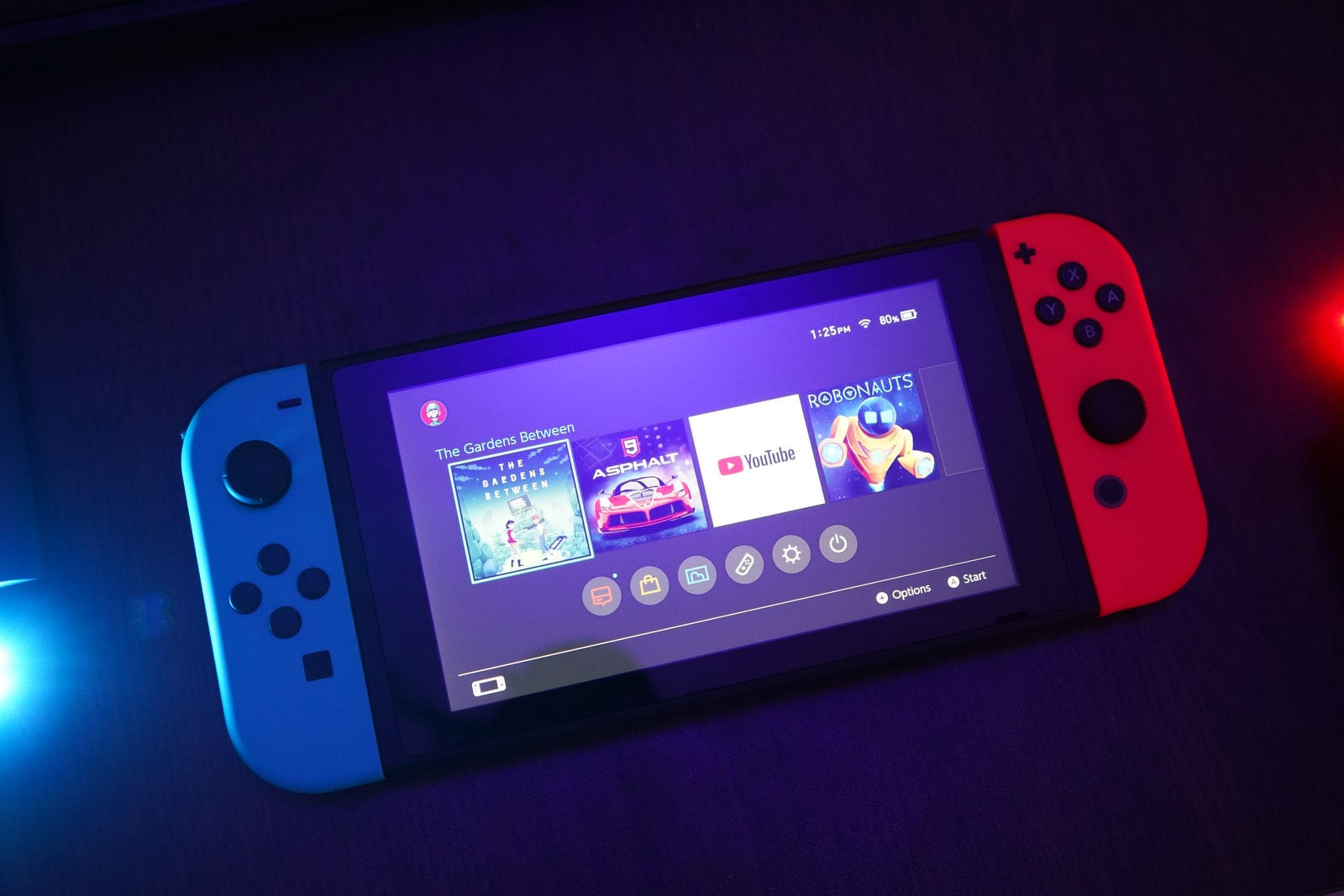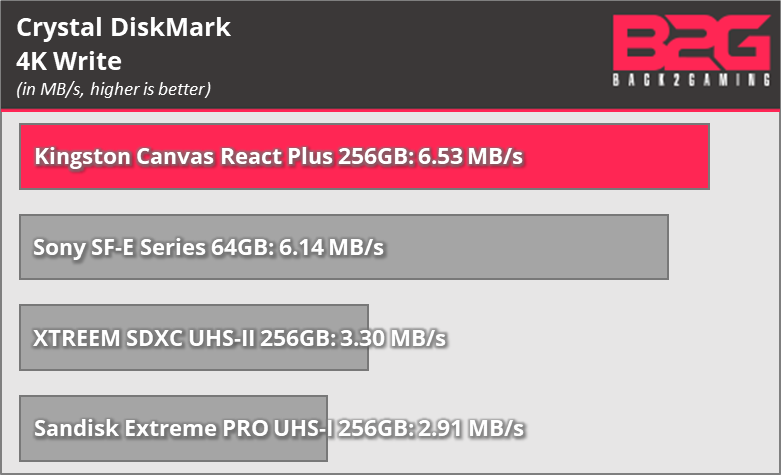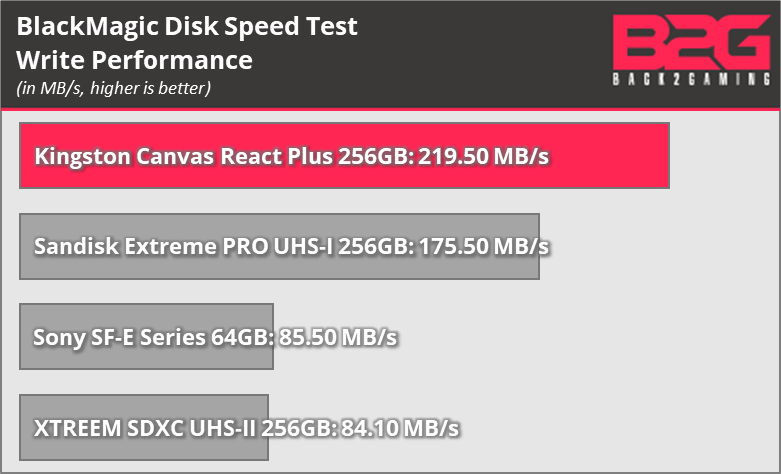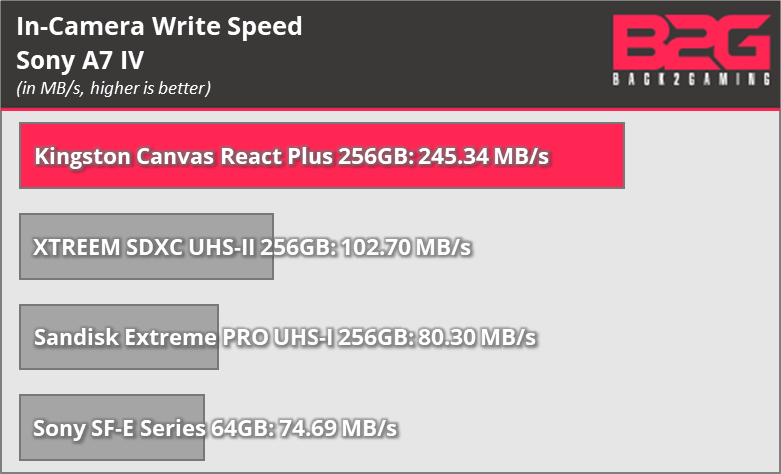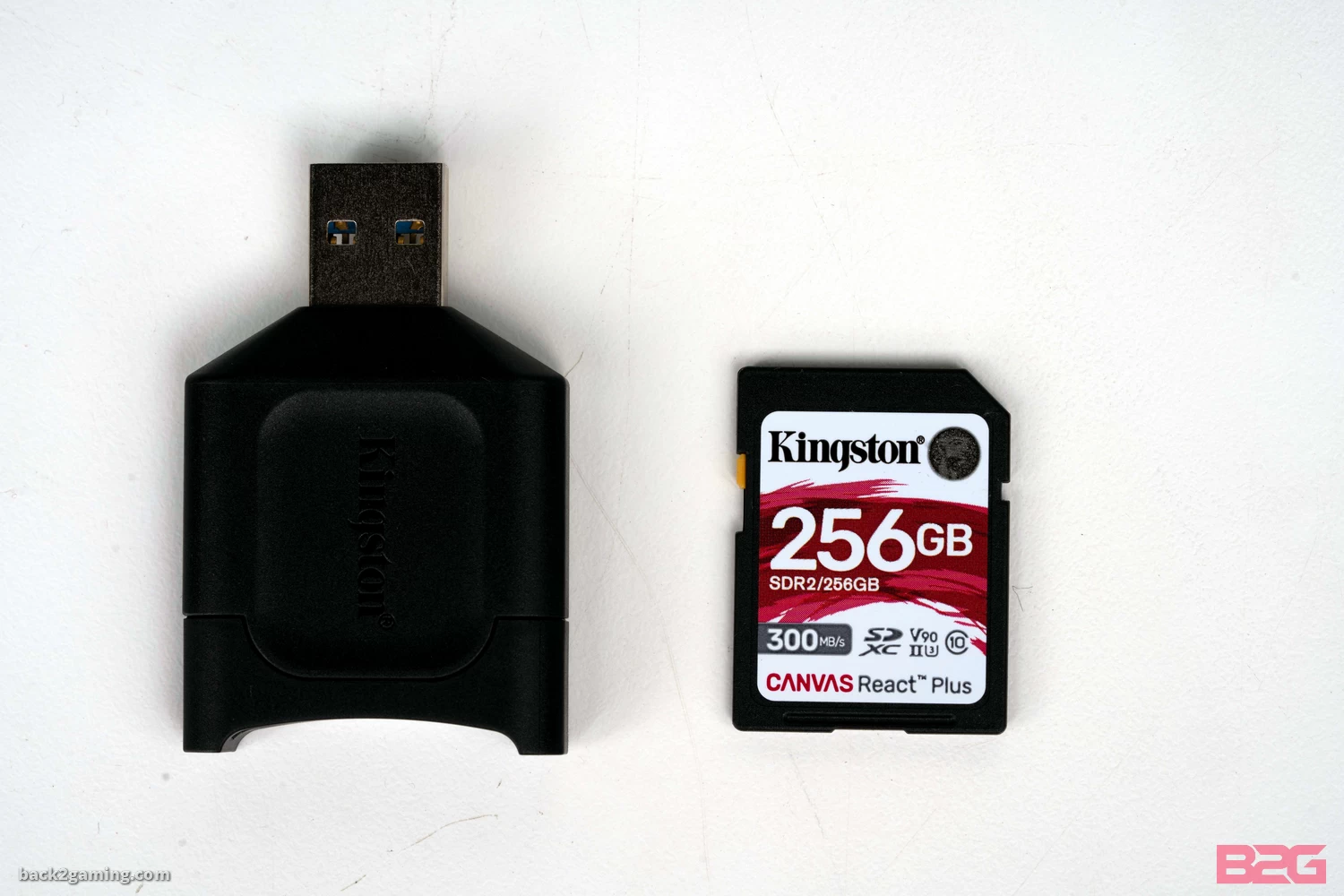Introduction
High-speed storage formats are already slowly making their way to more cameras but while SSDs are also getting some space in the professional video space, consumer cameras are still primarily using SD cards. Camera companies have gone so far to bring SD card compatibility in newer cameras that XQD and CFexpress share the same slot as an SD card interface.
But XQD and CFExpress Type B or A all bring with faster speeds while the current crop of SD and microSD cards are stuck in UHS speed classes. This is where the newer UHS-II speed class come in. Topping out at 312MB/s, the UHS-II bus interface provides a larger data transfer bandwidth versus its UHS-I sibling that has only 104MB/s. This means that devices that requires at least 105MB/s of data are assured to perform without write delays on the newer UHS-II drives.
Kingston’s Canvas React Plus is part of their large collection of Canvas SD and microSD storage products with the Canvas React serving as one of the fastest storage options available. The original Kingston Canvas React was a UHS-I card. The Kingston Canvas React Plus is a UHS-II card which brings with it a larger bump in performance.
In this review, we’ll take a look at how the Kingston Canvas React Plus performs plus some of my thoughts in actual use so read on to find out more.
Features & Specification
| Capacities | 32GB, 64GB, 128GB, 256GB |
| Standard/Class | Class 10, UHS-II, U3, V90 |
| Performance | 300/260MB/s Read/Write |
| Dimensions | 24mm x 32mm x 2.1mm (SD) |
| Format | FAT32 (32GB) exFAT (64GB-256GB) |
| Operating temperature | -25°C~85°C |
| Storage temperature | -40°C~85°C |
| Voltage | 3.3V |
| Warranty/support | Lifetime |
- Ultimate speeds to support professional camera use — Transfer speeds up to 300MB/s and recording speeds of up to 260MB/s, this card is ideal for professional creators.
- UHS-II standard for reliable high-resolution photography and video recording — Capture 4K and 8K Ultra-HD high-speed shots and videos without dropping frames.
- Optimize file transfer with included UHS-II SD Reader — Expedite your workflow with quick transfers using the included MobileLite Plus SD Reader.
Closer Look
The Kingston Canvas React Plus is sold in two packages: card only and one that includes a USB3.2 Gen1 USB card reader. Both are packed in clear, thermoformed plastic, similar to many of Kingston’s products.
The capacity is highlighted in the front with the speed rating listed as well. The back has more technical details.
Physically, there’s not much to discuss here as this is a traditional look and shape of a SD/SDHC/SDXC memory card. There is a lock notch to write-protect your data. At the back is a slight difference to normal cards with two rows of gold contacts versus one normally found on standard cards.
Test Setup, Methodology and Interpreting Numbers
Storage Performance for Photography
Most user will be perfectly fine with even the most bargain basement memory cards around regardless if its an older SD card or an even older CF card. At the point in time, even the minimum write speed of the SD cards standard is enough to perform in casual use and in these situations, its best to focus on capacity.
For professional usage though, it becomes more specific. Those who shoot RAW and in burst would want a large capacity storage media that writes quite fast. If a camera has a good hit rate of keeper shots then there’s a higher chance of capturing the perfect high-speed moment like this one.
The storage media will usually dictate how fast the burst buffer clears and how many shots a photographer can take in burst again. A camera will slow down after saturating the buffer and in instances where-in one wants to capture the best moment possible, faster means better whether its in sports, wildlife or just daily life.
Write Speed for Video Usage
With modern video recording, write speed has become an integral part for the camera’s storage. Many cameras will have multiple varieties of bitrate e.g. Sony’s XAVC in 4K 60FPS will have a bitrate of around 960Mbps. To translate to the memory card you need, a quick lookup should give a you a rounded number of 120MB/s of sustained write speed to utilize this codec.
Take note of the bitrate megabits (mbps) and the sequential write speeds (MB/s) when shopping for solutions for video recording. Consumer and pro-sumer cameras should still support SD cards, microSD (via adapter) cards with newer cards supporting the newer UHS-II SD cards, CFExpress Type-B and CF-Express Type-A.
More advanced cameras will utilize SSDs for codecs like Apple ProRes or DNx. ProRes RAW 4K60 would usually require storage that can do 300MB/s. While these speeds are attainable with smaller storage media like SD cards and CFExpress, the capacity requirements will usually be a limiting a factor as in this setting, these cameras will record nearly 20GB per minute of footage.
For non-professional users, please refer to your camera guide for the best codec. For professional users or content creators, familiarizing with the best codec for your workflow is best to see which is the most appropriate storage for your budget.
Take note of limitations implemented by camera manufacturers with storage e.g. Sony disabling 4K H&Q when using slower storage media.
Gaming Storage
Gaming devices like the Nintendo Switch and Valve’s Steam Deck along with some smartphones are some of the modern gaming devices that utilize removable storage. Both the Switch and Steam Deck support microSD cards while some phones may have proprietary card support but the majority support native microSD support.
Performance requirement for storage devices usually aren’t as high as video with modern devices happily settling in at the UHS-I U3 speed rating of around 100MB/s. Games are usually packed in large container files for these games and performance will vary depending on the size of the games. It will normally impact loading times in general but texture streaming can be affected as well.
Test Setup and Methodology
| CPU | Intel Core i9-12900K |
| Motherboard | ASUS ROG MAXIMUS Z690 EXTREME |
| RAM | G.Skill Trident Z5 DDR5-6000 C36 16GBx2 |
| GPU | ZOTAC RTX 3080 Ti AMP EXTREME |
| Storage | KLEVV CRAS 920 2TB M.2 NVMe |
| Cooling | ROG Ryujin II 360 |
| Power Supply | FSP HydroG Pro 1000w |
Performance Testing – Kingston Canvas React Plus SD Card
CrystalDiskMark
CrystalDIskMark has been the most actively updated disk benchmark amongst all the ones we use and is effectively the most reliable. Unfortunately, version to version results are not comparable which limits the ability to extrapolate comparative data. Still its a reliable and direct benchmark. Like the previous, it allows control over test data pattern, the test data size, amount of passes and individual benchmark control.
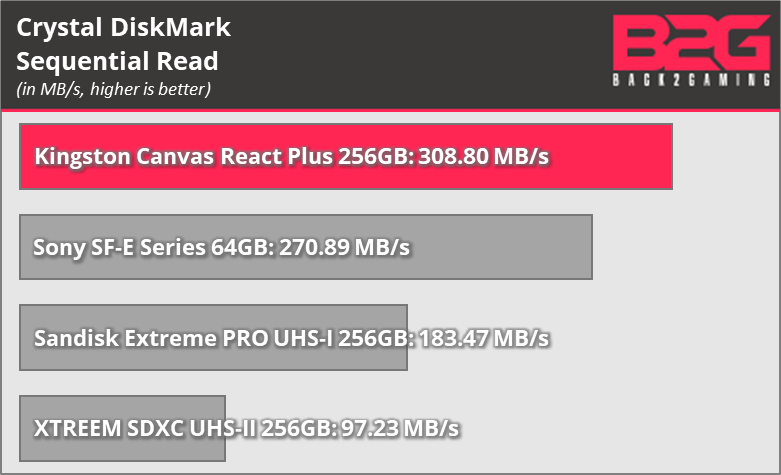
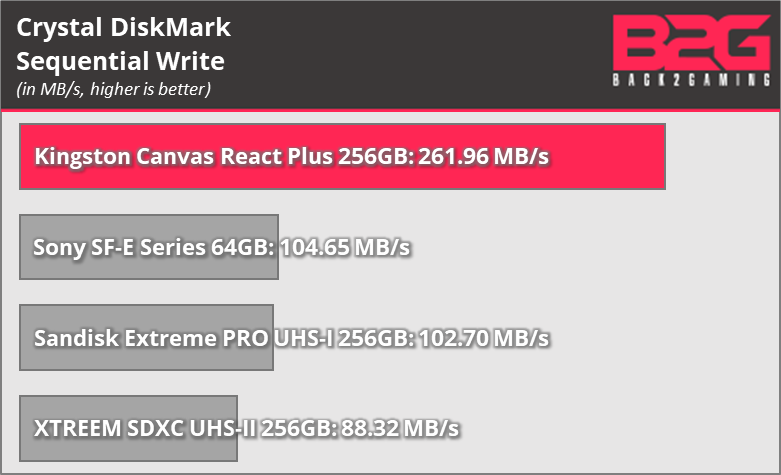
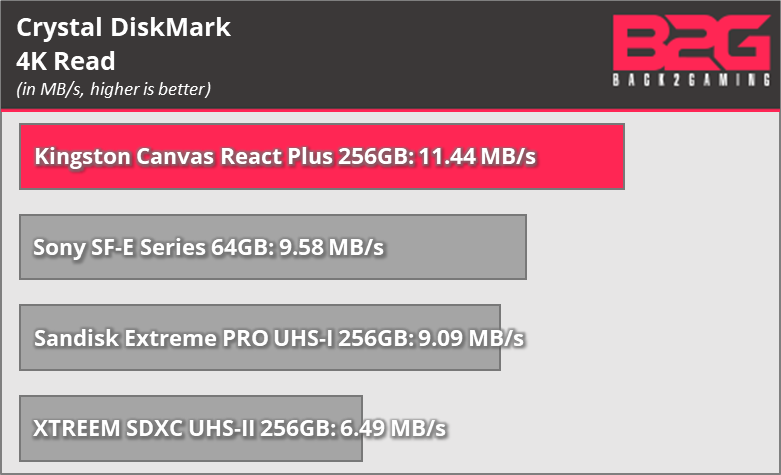
BlackMagic Design Disk Speed Test
BlackMagic Design’s own testing for its large broadcast and camera solutions for professional recording and broadcasting. The BlackMagic Design Disk Speed Test is an easy to use tool to quickly measure and certify your disk performance for working with high quality video. The benchmark lists target results and gives you an at a glance list of achievable codecs and bitrates with your storage device. These results are best used in support of Crystal Disk Mark’s longer 5-cycle results as BlackMagic Design’s single write cycle that alternates between read and write provides wobbling results. For these results, we captured the average of results from 5 consecutive tests.
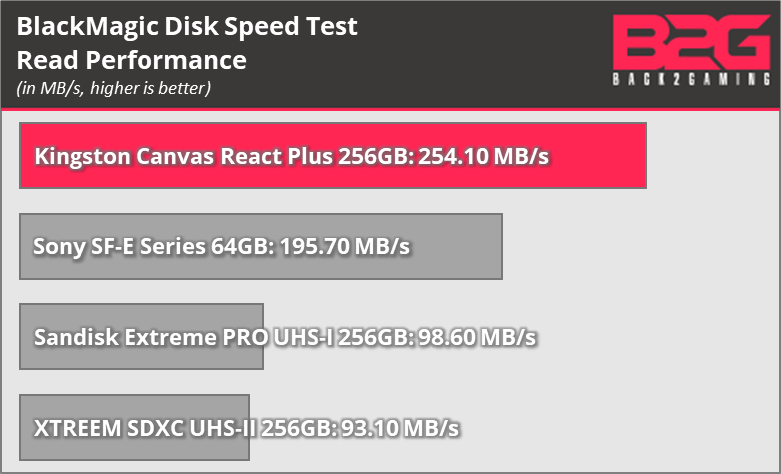
In-Camera Write Speed Testing
Actual in-camera performance test using the Sony A7 IV. We shoot uncompressed RAW photos in hi+ bursts, accounting for the burst capture and the buffer flush for the in-camera speed. Take note these speeds are unique the our test cameras will perform slightly differently in other cameras and shooting modes.
Value and Conclusion
Perhaps the strongest argument for the Kingston Canvas React Plus SD Card is the availability of 256GB capacities. In my search for a 256GB card, only Kingston offered it 256GB capacities in the Philippine market aside from Sandisk which unfortunately is not available readily.
Speaking of Sandisk, the Sandisk Extreme Pro UHS-II is a very close competitor to the Canvas React Plus in terms of theoretical performance but in actual value, looking at the 128GB models, the Kingston Canvas React Plus 128GB with SD Card Reader is listed for Php5900 (~$100) while the Sandisk Extreme Pro UHS-II 128GB is listed for Php9,199 (~$160). Both prices are quote by their official LazMall brand storefronts which definitively puts Sandisk at the back of the value mark versus Kingston not to mention you get a very fast card reader with Kingston.
Its easy to see these prices and scoff at why they’re so high but remember that stepping into UHS-II territory suggests your camera is able to use UHS-II as well which is quite a steep investment in itself. This also coupled with the potential earnings you may be having if you’re using your cameras professionally, is directly proportional to your performance expectation.
That being said, the Kingston Canvas React Plus is a great performer and as you can, I purchased 256GB models only as I rely heavily on these cards. At this performance class, a company can either excel in performance, value or ruggedness. While nearly all cards will have a lifetime warranty, their value sometimes will be offset by poor performance. Kingston offers one of the consistent highest performance in the UHS-II scene right now and offers this at a very low value.
Its merits only outclassed by Sony’s premium priced Tough cards with a durability rating Sony claims is around 20 times stronger than other SD cards. If you need a card you can sit on, then that may be your cup of tea but for most intents and purpose, the Kingston Canvas React Plus addresses the needs of a professional photographer or videographer and their modern cameras.
For its price, the Kingston Canvas React Plus features excellent performance and value is simply tough to beat.
Kingston backs the Canvas React Plus with a limited lifetime warranty. I give it my B2G Value Award and B2G Recommended Seal!


